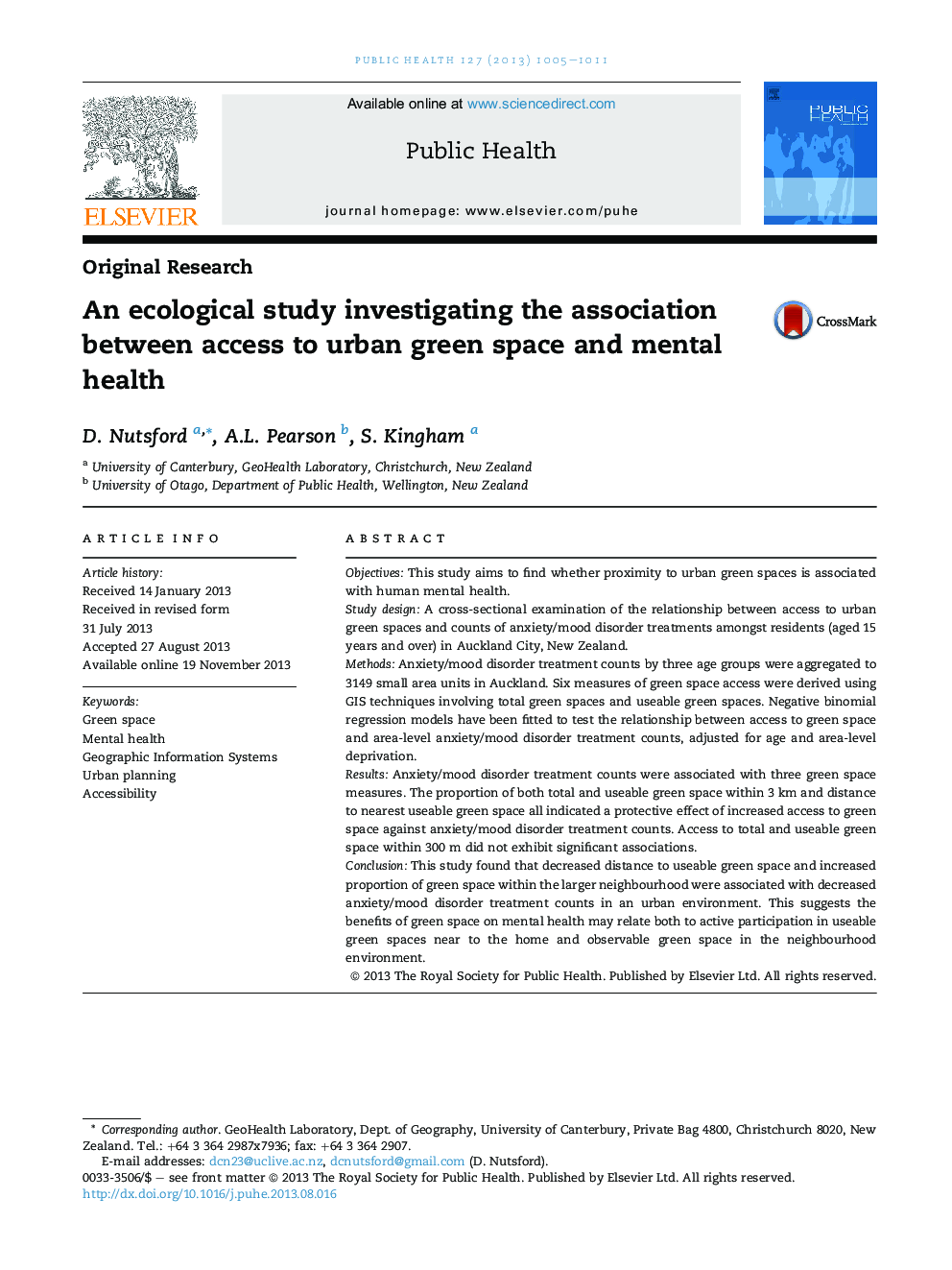| Article ID | Journal | Published Year | Pages | File Type |
|---|---|---|---|---|
| 1087497 | Public Health | 2013 | 7 Pages |
ObjectivesThis study aims to find whether proximity to urban green spaces is associated with human mental health.Study designA cross-sectional examination of the relationship between access to urban green spaces and counts of anxiety/mood disorder treatments amongst residents (aged 15 years and over) in Auckland City, New Zealand.MethodsAnxiety/mood disorder treatment counts by three age groups were aggregated to 3149 small area units in Auckland. Six measures of green space access were derived using GIS techniques involving total green spaces and useable green spaces. Negative binomial regression models have been fitted to test the relationship between access to green space and area-level anxiety/mood disorder treatment counts, adjusted for age and area-level deprivation.ResultsAnxiety/mood disorder treatment counts were associated with three green space measures. The proportion of both total and useable green space within 3 km and distance to nearest useable green space all indicated a protective effect of increased access to green space against anxiety/mood disorder treatment counts. Access to total and useable green space within 300 m did not exhibit significant associations.ConclusionThis study found that decreased distance to useable green space and increased proportion of green space within the larger neighbourhood were associated with decreased anxiety/mood disorder treatment counts in an urban environment. This suggests the benefits of green space on mental health may relate both to active participation in useable green spaces near to the home and observable green space in the neighbourhood environment.
